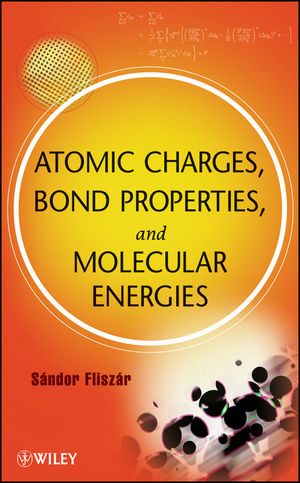Atomic Charges, Bond Properties, and Molecular EnergiesISBN: 978-0-470-37622-5
Hardcover
248 pages
November 2008
 |
||||||
I. CHARGE DISTRIBUTIONS.
1. Introduction.
1.1 The Bond Energy Model.
1.2 Scope.
2. Theoretical Background.
2.1 The Hartree -Fock Approximation.
2.2 Hartree -Fock -Roothaan Orbitals.
2.3 Configuration Interaction Calculations.
3. Core and Valence Electrons.
3.1 Introduction.
3.2 Atomic Core and Valence Regions.
3.3 The Valence Region Energy of Atoms.
3.4 Summary.
4. The Valence Region of Molecules.
4.1 Model.
4.2 The Core -Valence Separation in Real Space.
4.3 Formula for the Valence -Region Energy.
4.4 Interface with the Orbital Model.
4.5 Approximation for the Valence Energy.
4.6 Perturbation of the Valence Region.
4.7 Summary.
5. Inductive Effects; Atomic Charges.
5.1 Introduction.
5.2 The Inductive Effects.
5.3 Meaningful Atomic Charges.
5.4 Selected Reference Net Atomic Charges.
6. Atomic Charges and NMR Shifts.
6.1 Scope.
6.2 Introduction.
6.3 Merits of Charge -Shift Relationships.
6.4 Aromatic Hydrocarbons.
6.5 Relationships Involving sp3 Carbon Atoms.
6.6 Relationships Involving Olefinic Carbons.
6.7 Carbon Bonded to Nitrogen or Oxygen.
6.8 Correlations Involving N-15 NMR Shifts.
6.9 Correlations Involving O-17 Atoms.
6.10 Summary.
7. Charges and Ionization Potentials.
7.1 Conclusion.
8. Population Analysis.
8.1 The Standard Mulliken Formula.
8.2 Modified Population Analysis.
8.3 An Adequate Approximation.
8.4 Conclusions.
II. CHEMICAL BONDS. ENERGY CALCULATIONS.
9. Thermochemical Formulas.
9.1 Basic Formulas.
9.2 Zero -Point and Heat -Content Energies.
9.3 Concluding Remarks.
10. The Chemical Bond: Theory (I).
10.1 Synopsis.
10.2 Nonbonded Interactions.
10.3 Reference Bonds.
10.4 Bond Energy: Working Formulas.
10.5 Basic Theoretical Parameters.
10.6 Saturated Molecules.
11. The Chemical Bond: Theory (II).
11.1 Valence Atomic Orbital Centroids.
11.2 Unsaturated Systems.
11.3 Recapitulation.
12. Bond Dissociation Energies.
12.1 Scope.
12.2 Theory.
12.3 Nonbonded Interactions.
12.4 Selected Reorganizational Energies.
12.5 Applications.
12.6 Conclusion.
III. APPLICATIONS.
13. Saturated Hydrocarbons.
13.1 Acyclic Alkanes.
13.2 Cycloalkanes.
14. Unsaturated Hydrocarbons.
14.1 Olefins.
14.2 Aromatic Molecules.
15. Nitrogen -Containing Molecules.
15.1 Amines: Charges of the Carbon Atoms.
15.2 Nitrogen Charges and Bond Energies.
15.3 Results.
16. Oxygen Containing Molecules.
16.1 Ethers.
16.2 Alcohols.
16.3 Carbonyl Compounds.
17. Perspectives.



